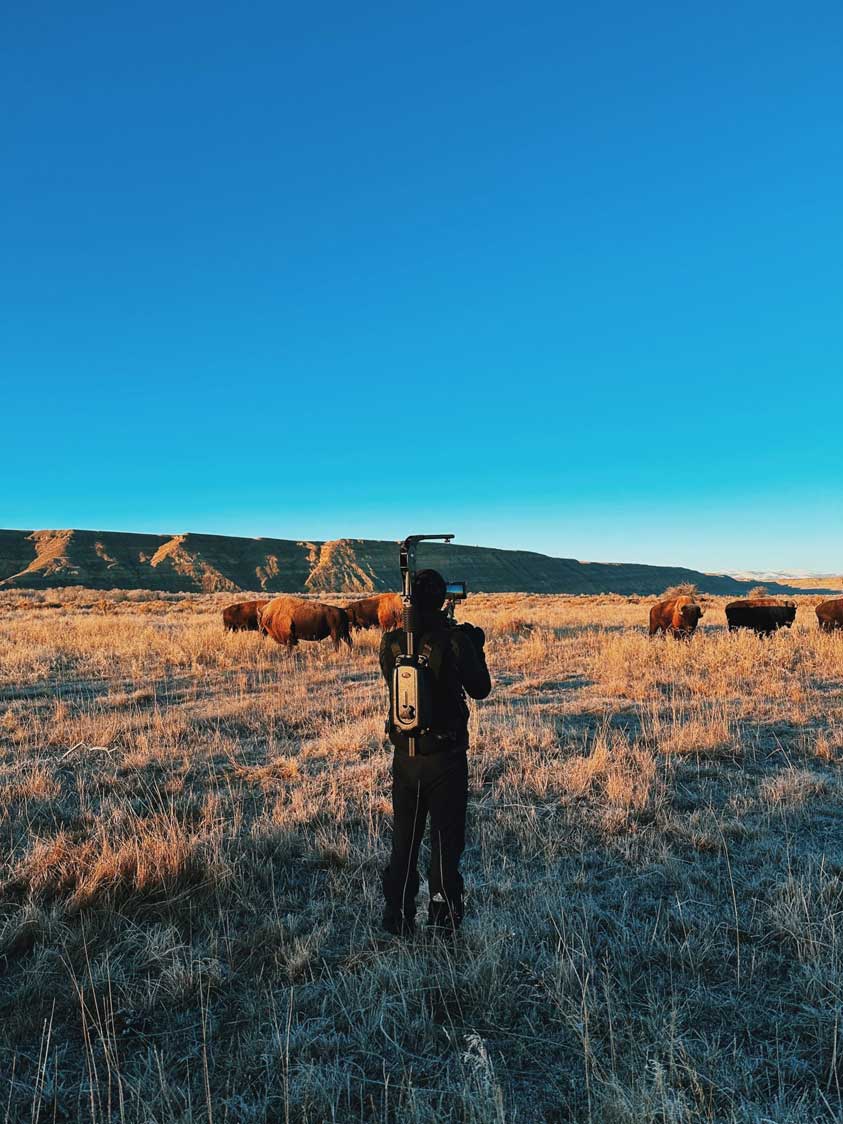Native American artists share their stories, history, culture at film festival

'Wallowing Bull’ being filmed. Photo courtesy of Christian Wallowing Bull.
Emily McCauley, Contributing Writer
The Virginia Museum of History and Culture will host Pocahontas Reframed from Nov. 17 through 19, the East Coast’s largest Native American film festival, according to Bradby Brown, Pocahontas Reframed director.
“Storytelling is the heartbeat of indigenous culture, and that’s really what the film festival is about, is native people telling their stories about native history and culture,” Brown said.
The festival will occur from 9 a.m. through 4 p.m. in the Robins Family Forum at the VMHC. Films will occur all day at the festival, totaling 31 films over the three days.
The Tsenacommacah Eastern Indian Marketplace will take place at the festival for the first time this year on Saturday and Sunday, with native artisans selling jewelry, pottery, clothing, gourds and more, according to Brown.
November is Native American Heritage Month, and the festival occurs the weekend before Thanksgiving, making it a good time for the event, Brown said.
The purpose of the festival beyond storytelling is educational and to allow students and citizens to learn about and appreciate American Indian culture, languages and cinema, according to Brown.
“Every year more and more people come to it and I think they really enjoy it,” Brown said. “The films are really what bring people in — we have musical performances as well.”
Musician Christian Wallowing Bull will show his short film titled “Wallowing Bull” at the festival on Nov. 17 at 10:30 a.m., according to the festival’s website.
The film represents Wallowing Bull’s family on the Wind River Indian Reservation, he said. The Eastern Shoshone and Northern Arapaho tribes share this reservation together.
“I am North Arapaho and the song and the film are supposed to represent the essence of the reservation as well as my people and my family,” Wallowing Bull said.
The song in the film represents the healing of his people and shows the significance of buffalo to the tribes on the reservation, Wallowing Bull said.
“Within the video we captured buffalo here on the reservation and that is very significant to our people and we understood we wanted to bring that element to our film slash music video,” Wallowing Bull said.
The two tribes have considered themselves buffalo people for many generations and are working with an organization called the Wind River Tribal Buffalo Initiative to bring buffalo back to their land, according to Wallowing Bull.
Wallowing Bull hopes the attendees can witness the power and energy that is in the native communities on the Wind River Reservation in Wyoming, he said.
“I have always considered myself a modern-day storyteller,” Wallowing Bull said. “That for me as an artist and an Arapaho tribal member I believe I’m honoring traditions that have been passed down for many generations from my people and being able to tell stories about what it looks like today in society.”
“Rabbit Stories,” an animated film written fully in Cherokee, will be screened on Nov. 17, according to Joseph Erb, writer, producer and director. The screening will be at 10:30 a.m., according to the festival’s website.
Erb aims to create media that includes Cherokee and represents native life in the present day, he said.
“So that people understand that our language is today’s language, not a past language,” Erb said.
“Rabbit Stories” is set in the present day, so audiences will see recognizable buildings and the capital of Cherokee Nation, Tahlequah, Oklahoma, Erb said.
Erb said he feels many people outside of indigenous communities think their stories are just entertainment, but these stories have values and accurate knowledge of medicine and history.
“For indigenous media, we are such a small group, we don’t have these areas where someone can really focus in on our creativeness of this media and this is a film festival that does that and I just wanted to be a part of it,” Erb said.
The VHMC, the event’s host, is dedicated to recognizing and remembering that native culture is still part of Virginia history and Virginia culture, said Joseph Rogers, the director for partnerships and community engagement at the VHMC.
“There were concerning efforts to erase native peoples from Virginia,” Rogers said. “That is an aspect of our history that we have not faced well enough.”
When one walks into the museum, the flags out front say “Your history. Your story,” and the VMHC means that for native people as well, Rogers said.
“We cannot discount that their culture and their history is what makes this all possible,” Rogers said.
Creating the ability for people to tell their own stories is the VMHC’s goal for this year and upcoming years, Rogers said.
“I want people to come in with an open mind so that they are able to see the stories that are put in front of them,” Rogers said. “That they’re able to think about what people went through in order to make those stories and then I would love them to commit themselves to ensure that more of those stories are heard.”


